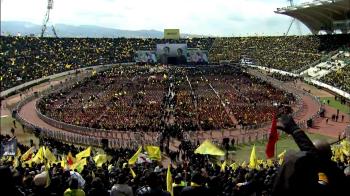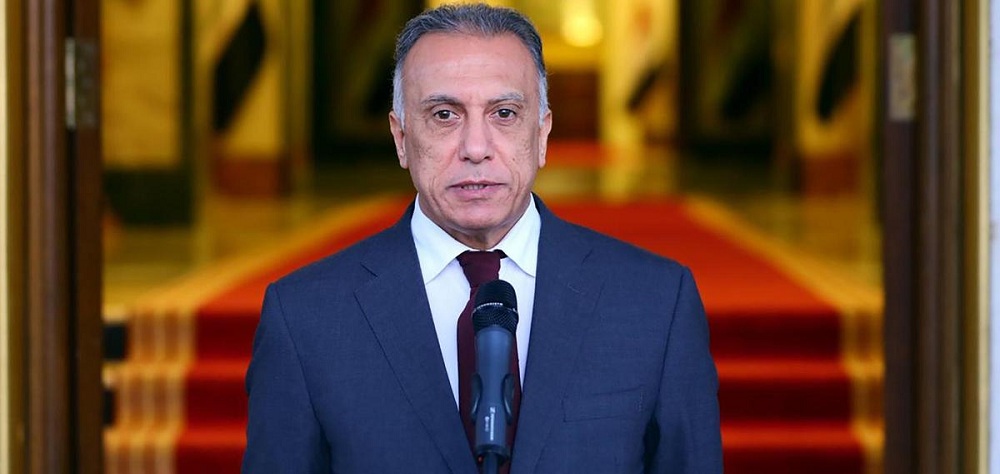Alwaght- On Monday, the Iraqi Prime Minister Mustafa al-Kadhimi reshuffled important economic and financial posts in the country, announcing new people for the positions. His move was met with considerable reactions from the political circles. The reforms are coming as over the past few days grand Ayatollah Sayyed Ali Sistani, the top Shiite cleric in Iraq, had talked about the government's need for large-scale economic reforms and uprooting the corruption.
Assumed the post with the slogan of “maximum” crackdown on the corruption, al-Kadhimi in his most important move dismissed central bank governor Ali Mohsen al-Alaq who held the post in the most important monetary institution in the country for six years. The replacement was Mustafa Ghaleb, the director of the legal affairs of the central bank.
The PM also named Suha Dawood Elyas al-Najar as the new head of the National Investment Commission as the leading investment decision-making body of Iraq. He also appointed Salem Jawad Abdelhadi al-Chalabi as the head of the country’s Bank of Commerce, a key state institution for opening LCs (Letter of Credit) outside the country. Moreover, al-Kadhimi named Hassan Halbous Hamzah as the new chairman of the Securities Commission.
The shakeup also reached some service and intelligence bodies. Al-Kadhimi named Manhal Aziz Raoof al-Haboobi as Baghdad governor, former Defense Minister Khaled al-Abidi as the head of operations in the Intelligence Service, Sammi al-Masaoudi as the chief of High Commission for Hajj and Umrah, and Alaa Jawad Hamid as the chief of the National Integrity Commission, which is tasked with fighting corruption in the country.
Economic reforms and anti-corruption fight since the last year’s protests have been the top demands of the protestors and the top election promises of the political parties in the Arab country. The previous government also promised to address the demands and even took some steps towards them but its measures failed to yield the called-for results.
Now the question is that how far could the al-Kadhimi government go in its anti-corruption campaign and implementation of the economic reforms while the path has never been smooth and thus the PM has serious obstacles ahead?
Challenges al-Kadhimi is facing
The PM’s changes come in a situation in which the country’s economic rates over the past few years have been critical. These are the main issues al-Kadhimi and his cabinet members need to get right while only a few months separate Iraq from the snap election. Here are some of the challenges:
1. Rife corruption: Unquestionably, one of the key damaging agents failing the Iraqi economy in the post-Saddam period has been the prevalent corruption. The corruption in the country is entrenched to a degree that no bureaucratic process can go ahead within its normal routes, and to proceed with work, resorting to backdoors and illegal paths is inevitable. The managers unusually take for themselves big money sums, which are irrelevant to their salaries, and deposit them in the home or foreign banks. These conditions make Iraq rank 162 from a total of 180 countries in Transparency International’s Corruption Perception Index.
2. Unbalanced economic growth: Another factor adding to the reasons behind various Iraq governments’ economic failure is the unbalance in economic growth, that is leaving deep impacts on the national economy. As a matter of fact, the unbalanced growth, which is displayed by the enjoyment of some layers of the population and groups from wealth and welfare while other layers are living in deprivation, is not just a signal of discrimination and corruption but also a sign of the government’s failure to build a democratic economy that would address needs of all citizens equally and bring about welfare to the whole nation. Meanwhile, the important point is that Iraq holds the highest rate of unbalanced economic growth among the Arab countries and this gives every reason to the protests to spark.
3. Severe economic decline: Severe decline of the economy is another indicator of the governments’ failure after 2003, the year Baathist rule was toppled. To give a picture of the situation, we can refer to reports published to share figures of GDP, inflation, national currency value, foreign investment, and the GDP ratio. The GDP figures from 2006 to 2015 can provide a clear picture. Iraq’s gross domestic product has been $4140.7, $4093.5, $4318, $4343.6, $4487.4, $4647.6, $5150, $5303.4, $5303.5, and $4963.1 consecutively from 2006 to 2015.
Economic crisis severity, the balance of payments, and public financial predicament even deteriorated when the oil prices dropped badly as a result of the coronavirus crisis that cut the global demand for energy, pushing the government to face challenges in its push to save macroeconomics and reform the economy to improve the public sector and reconstruct the largely-damaged infrastructure.
4. Unbridled unemployment: Yet another obstacle ahead of the PM is the high unemployment rate. The Unemployment rate is the proportion of the unemployed working-age population to the total working-age population. The unemployment rate in 2004 and 2005 was 25 percent, in 2006 was 18 percent, and in 2012 was 15.3 percent. Despite improvements, it heightened again in 2014 and 2015 as a result of the anti-ISIS war and the displacement of the population in affected regions.
According to statistics, the unemployment rate among the working-age population has been 15 percent until 2014. This rate did not improve in 2015 due to specific conditions, despite the pro-reform vision of the new government to the economy. It even rose to 15.5 percent in that year. PM Haider al-Abadi government’s push to create jobs and force down the growing unemployment rate in 2016 went nowhere, with the percentage reaching 16 percent. As a result of the coronavirus pandemic outbreak along with decreased oil revenues in later 2019, a major part of the public sector was shut down practically, forcing up the unemployment rate to over 20 percent.
5. Political parties and groups come against major reforms: Another hurdle al-Kadhimi is facing in his push for reforms and economic improvement is the opposition raised to his measures by the political sections. The Experience of post-2003 Iraq shows that reform is essentially regarded through the lens of politics in the country and thus in the arrangement of the people in posts and the whole reform process, the PM should respond to the specific demands of the parties. For example, a majority of the political parties, without taking into consideration that what results the change of the figures by the PM can bring about, are opposed to the way of change and figures appointed. This opposition in the near future can cost him dismissal from power, which means all of his reform plans can be aborted.
A collection of these big and firm obstacles shows how difficult is al-Kadhimi’s mission for fighting corruption and introducing fundamental reforms. Certainly, the economic reforms for a return to stability and welfare are not likely to meet success in the coming months and even years, or even in the short run. Therefore, al-Kadhimi’s reshuffle should be read as a simple change of economic managers rather than an economic equations-changing reform. The experiences of Iraq over time assert that change of individuals cannot resolve the major economic issues of the country.



























